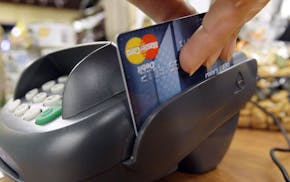If Upper Deck made trading cards for countries, here's what the vital statistics for the U.S. economy would have looked like four years ago this month, on the eve of what we now call the Great Recession.
•Employment: 138 million Americans had jobs, compared with 131 million who do now; the unemployment rate was 4.7 percent, vs. 9 percent now.
•Housing: The median sales price of all homes sold in the U.S. peaked that year at $247,900, before falling to under $221,000 last year. Builders were on pace to add more than 833,000 single-family homes in 2007, compared with 313,000 this year.
•Markets: The Dow was above 13,000 in November 2007; it's under 12,000 now. The S&P 500 traded above 1,400 then, vs. barely 1,200 now.
By conventional benchmarks, and especially compared with today, the U.S. economy was an all-star performer between 2005 and 2007. In reality, it was an economy on steroids, and the performance-enhancing drug was debt.
When the Great Recession hit in December 2007, many analysts assumed it would be like typical recessions. Businesses would contract, people would lose their jobs but, after a relatively brief period, the economy would bounce back and quickly resume its long-run trajectory.
That's what happened in 1982, when the unemployment rate peaked at 10.8 percent and then began falling steadily; 14 months later it was under 8 percent.
But a few economists, notably Kenneth Rogoff and Carmen Reinhart, warned that things would be different this time. They analyzed dozens of financial crises over the span of five or six centuries, and what they concluded proved alarmingly prescient.
The Great Recession didn't result from a drop in demand, they found, but from the sudden withdrawal of the cheap money/easy credit that had falsely inflated economic growth to begin with.
In most recessions, the economy begins to experience a brisk recovery within a year. But in a financial crisis, "it typically takes an economy more than four years just to reach the same per-capita income level that it had attained at its pre-crisis peak," Rogoff wrote.
In the United States, that hasn't happened yet, which only underscores how dependent our economic growth had become on cheap credit.
But progress has been made, if even only incrementally, in restoring the U.S. economy to a sounder footing. We may not be out of the woods, but we've experienced a string of encouraging economic news.
Real gross domestic product, the most comprehensive measure of economic output, grew faster than analysts expected in the third quarter. It now stands above pre-recession levels, a meaningful milestone.
Auto sales, and consumer spending in general, are up. So is factory production. Inflation is under control. Exports are growing. Fears of a double-dip recession have eased and the markets, despite tremendous uncertainly in Europe, are flat or down only slight for the year.
The housing market remains a significant drag on the economy, but the months' supply of new homes has fallen by a third, to normal historic levels. The number of unemployed remains painfully high, but the economy is slowly adding jobs.
I'm not making an argument for diminished expectations, just more realistic ones.
The unemployment rate is unacceptably high, but it may not go back under 5 percent for a very long time, even with sustained job growth. That wouldn't be unusual. For much of the '70s and '80s and the first half of the '90s, it rarely dipped below 6 percent.
It may be another decade or more before home values recover to their pre-recession levels. But truthfully, in your heart of hearts, did you really believe Zillow when it said your home's value had doubled in five or six years?
Sometimes it feels like we've attached the same burden of unrealistic expectations to the entire U.S. economy that investors, market seers and venture capitalists had in the weeks and months following the technology stock plunge of a decade ago. It was only a matter of time, they said, before the tech-heavy Nasdaq index resumed its ascent past 5,000.
Hundreds of companies went out of business waiting for a day that never came. Yet by almost any measure, the tech sector today is a stronger and more vital component of the U.S. economy than it was then.
Let's hope the U.S. economy is on the same path to longer-term sustainable growth. The numbers may look paltry compared with 2005 or 2006, when home values were surging and the unemployment rate was under 5 percent. But in retrospect it's now clear that much of our prosperity was no more grounded in reality than the notion that Pets.com was worth $325 million.
ericw@startribune.com • 612-673-1736

Wieffering: Time to get over debit card fees
For Thrivent and others, warnings were there

With billions in sales, some co-ops are big business
